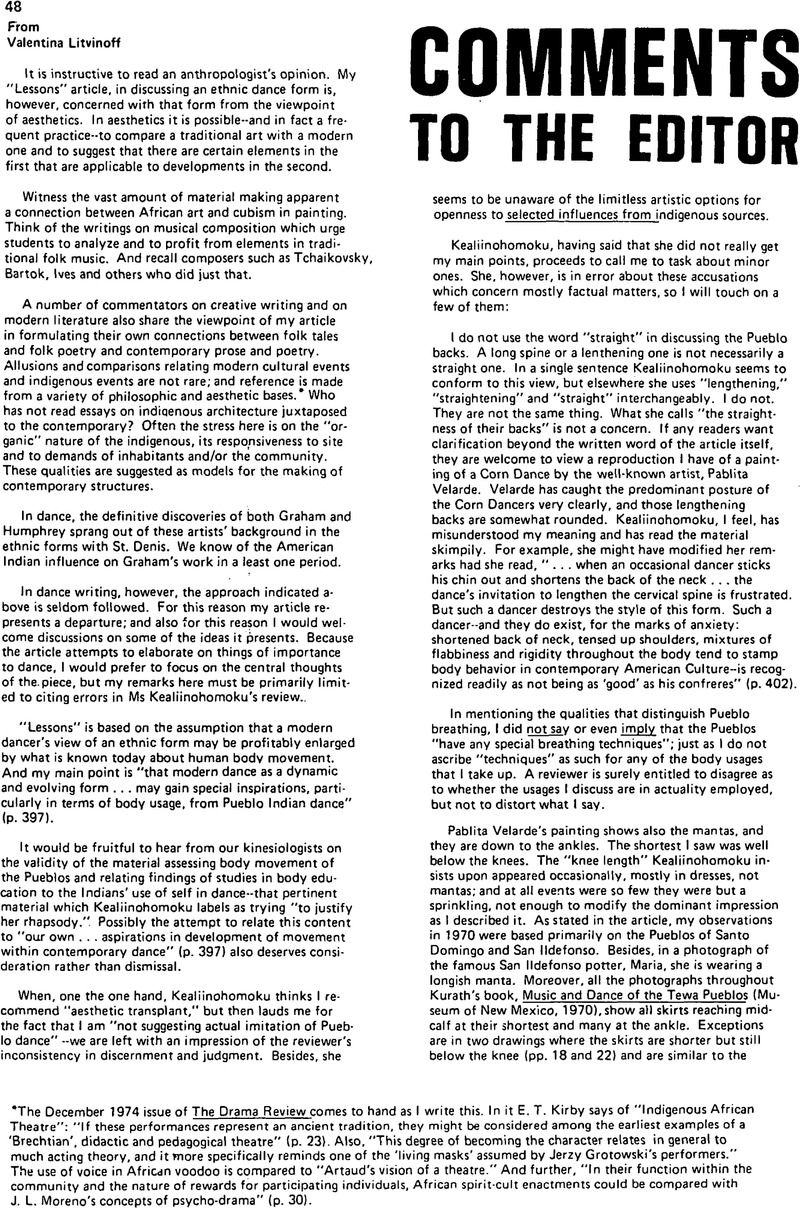No CrossRef data available.
Article contents
Comments to the Editor
Published online by Cambridge University Press: 22 July 2014
Abstract

- Type
- Other
- Information
- Copyright
- Copyright © Congress on Research in Dance 1975
References
* The December 1974 issue of The Drama Review comes to hand as I write this. In it E. T. Kirby says of “Indigenous African Theatre”: “If these performances represent an ancient tradition, they might be considered among the earliest examples of a ‘Brechtian’, didactic and pedagogical theatre” (p. 23). Also, “This degree of becoming the character relates in general to much acting theory, and it more specifically reminds one of the ‘living masks’ assumed by Jerzy Grotowski's performers.” The use of voice in African voodoo is compared to “Artaud's vision of a theatre.” And further, “In their function within the community and the nature of rewards for participating individuals, African spirit-cult enactments could be compared with J. L. Moreno's concepts of psycho-drama” (p. 30).




